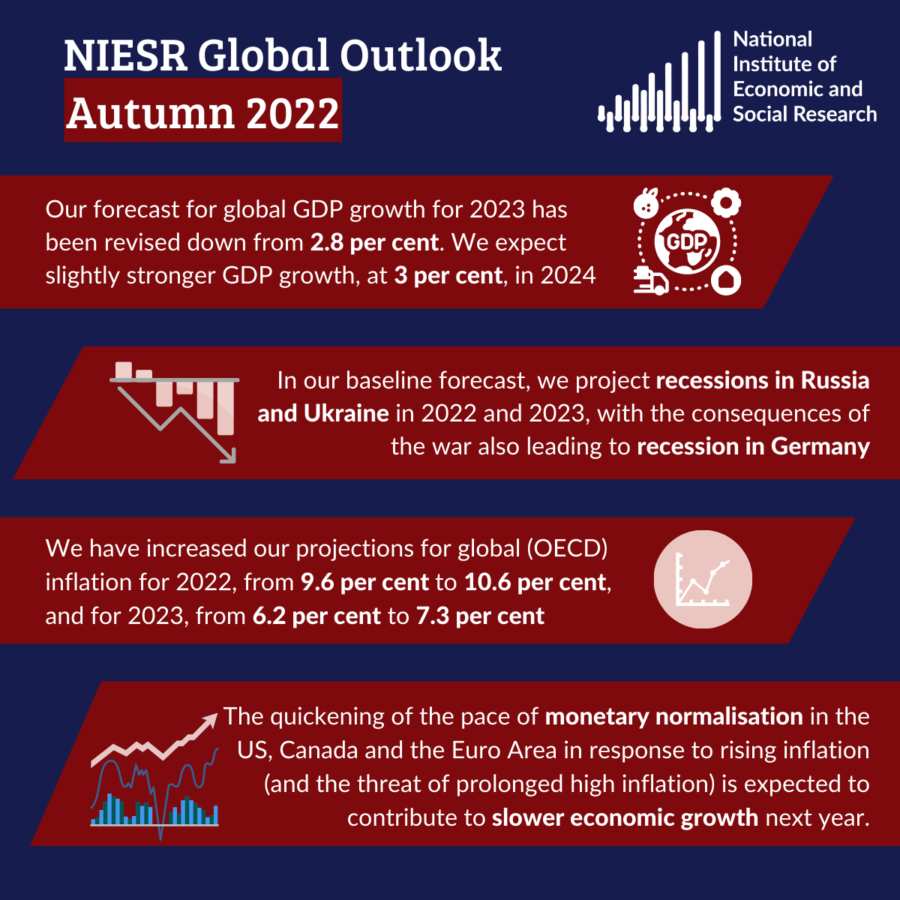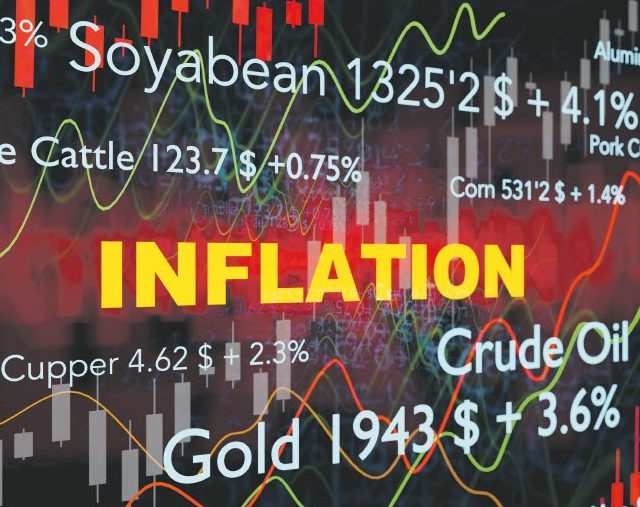Troubled Waters
Against the background of a rebound in global economic activity from the Covid-19 downturn, at a time when demand-supporting policies and supply-chain problems contributed to higher inflation, policy interest rates started to increase in 2021, largely in emerging market economies rather than advanced economies. One consequence is that the quarterly pattern of economic growth has shown considerable heterogeneity across countries, particularly between advanced and emerging economies.
Sign in to Access Pub. Date
Pub. Date
11 November, 2022
 Pub. Type
Pub. Type

Main points
- The inflationary impulse and uncertainty created by Russia’s war in Ukraine, supply chain disruptions and loose monetary and fiscal policies in response to Covid-19, which has resulted in tighter monetary policy globally, and China’s slowdown continue to contribute adversely to economic prospects globally. Our forecast shows higher inflation and slower growth in 2023 than previously. Our forecast for global GDP growth for 2023 has been revised down from 2.8 per cent in our Summer GEO to 2.5 per cent, mainly driven by the major advanced economies and commodity importers among emerging economies. We expect slightly stronger GDP growth, at 3 per cent, in 2024.
- In our baseline forecast, we project recessions in Russia and Ukraine in 2022 and 2023, with the consequences of the war also leading to recession in Germany. In addition, our outlook for the US economy borders on a recession in 2023, after the two successive quarters of falling GDP in the first half of this year. With the continued economic challenges, global recession risks are heightened.
- The quickening of the pace of monetary normalisation in the US, Canada and the Euro Area in response to rising inflation (and the threat of prolonged high inflation) is expected to contribute to slower economic growth next year. The slowdown in China so far this year in response to renewed Covid-19 cases is also an important factor in the relatively slower rate of global economic growth in 2022. We are not projecting an early return to substantially faster GDP growth in China until 2024.
- We have increased our projections for global (OECD) inflation for 2022, from 9.6 per cent to 10.6 per cent, and for 2023, from 6.2 per cent to 7.3 per cent. We continue to forecast that inflation next year will be lower than this year and that price inflation will continue to decelerate in 2024 as monetary policy normalisation continues. Part of this reduction in pace is driven by the assumption that energy price inflation will fall but the near-recessionary short-term global demand growth outlook will also contribute. Even though we forecast that inflation will fall, we do not expect inflation rates consistent with price stability in the major advanced economies until beyond 2024.
- After the 0.75 percentage point increases in June and September, we now assume that the US Federal Reserve (Fed) raises policy interest rates to 4 per cent by the end of this year and 4.75 per cent by the end of 2023. The Euro Area is running well behind the US in terms of monetary policy tightening, yet the European Central bank (ECB) has now increased policy interest rates by 1. 5 percentage points to date to the highest rate since 2009. But the Euro Area faces a different inflation and economic challenge from the United States: the effects of higher (imported) energy prices are playing a larger role in Euro Area inflation compared to the US, and the war in Ukraine has increased the dispersion of Euro Area inflation rates, making it more difficult for the ECB to tackle inflation in one country without causing a recession in another. The Bank of Japan is expected to hold its key short-term interest rate at -0.1 per cent.
- Tighter US monetary policy this year has translated into higher medium-term market interest rates, higher government borrowing costs, and an appreciation of the US dollar against most currencies. While several emerging market economies raised rates in 2021 before advanced economies acted, the effects of US policy tightening and currency depreciation are being felt mainly in emerging economies with concerns about sovereign debt sustainability, higher imported inflation, and capital outflows – as investors’ risk appetite moderates – starting to mount. The countries that are best positioned to avoid such debt concerns are those that are commodity (and especially oil) exporters, who benefit from higher commodity revenues.











